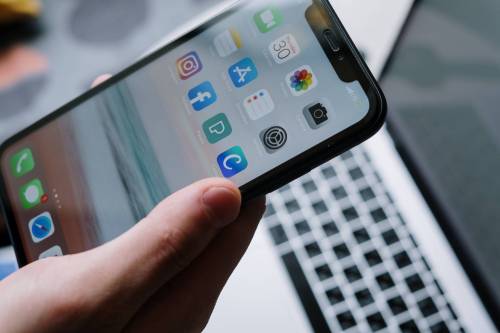

If you want to stay in good health, you need to be proactive. That means cooking good meals, getting lots of exercise, taking care of your eyes, attending regular appointments, and more. For many people, it seems impossible to find the time to take care of all these wellness activities.
But with proper time management strategies, it all becomes much easier.
The Big Picture
There are a few problems associated with believing you don’t have enough time for your health. It could be that you’re wasting time on unnecessary activities. Or, maybe it could be that you haven’t made the effort to incorporate health and wellness activities into your routine. It could be that you’re overestimating how much time it takes to improve your health and wellness, and it could even be that you’re spending too much time on health activities you do pursue.
For that reason, we’ll be exploring strategies in multiple different areas:
Analyzing time expenditures.
First, you need to analyze how you’re spending your time. This way, you can determine the root causes of your perceived lack of time and start making changes for the better.
Making more time.
Second, you need to start eliminating sources of time waste so you have more time that you can spend on health-related activities. For example, if you can cut back on social media use by just 30 minutes a day, you should have plenty of time for daily exercise.
Streamlining health-related tasks.
Third, we’ll help you find ways to streamline all your health-related tasks, promoting your health and wellness in less time. For example, instead of going to the optometrist’s office and trying on pairs of glasses, one by one, you can shop for glasses online.
Committing to minimum effort.
Fourth, we’ll uncover some of the most time efficient and simplest strategies for improving your health.
Analyzing Your Time Expenditures
Everything starts with analyzing your current time expenditures. For this, we recommend using a time tracking and/or calendar app. Take a broad snapshot of where you’re spending your time and be sure to track even little activities like getting lunch or texting friends. If there are swaths of time that are unoccupied, be sure to note it.
Going through this step, you’ll likely start identifying some of the root causes of your lack of time.
Making More Time
Next, we need to find ways to free up time in your schedule, so you can spend that time on activities related to your health. The exact cuts and reallocations you make here will depend on your analysis, so don’t skip that important step.
The following are some strategies and ideas to get you started, but each individual will have their own journey here:
Cut unnecessary activities and appointments.
Consider cutting out some of your unnecessary activities and appointments. Taking 15 minutes to visit the drive thru of your favorite café before work may be a pleasurable activity, but you can save money and time by making coffee at home. Watching movies with your family is an activity you won’t want to skip, but if you focus on shorter movies or TV shows, you could free up significant time. And of course, you can cut or reduce the time you spend on various hobbies that don’t pertain to your health, such as playing video games or baking.
Consider reducing your workloads.
You may also benefit from reducing your workloads directly. There are many ways that you can do this, such as by saying no to new responsibilities, delegating, requesting fewer responsibilities, or eliminating side gigs and extra jobs. If you’re so overworked you literally don’t have time for exercise, reducing your workload is probably going to significantly reduce your stress.
Automate what you can.
Automation is a secret weapon when it comes to productivity. If there are any repetitive or menial tasks that eat up your schedule, consider investing time and energy into automating them. Even if you’re only saving a few minutes a day, that time adds up – and can afford you significant time to focus on things that really matter.
Eliminate sneaky time waste.
Hunt down and eliminate sources of sneaky time waste. These are activities that don’t seem like they take a long time, but they add up to affect a disproportionate amount of your schedule. For example, an average user spends about 2.5 hours on social media every day. Even if you only cut that amount of time in half, you’ll free up 10 or more hours every week that you can use to improve your health.
Improve your overall productivity.
Finally, work on improving your overall productivity. Eliminate multitasking, as it typically makes you less productive. Get organized, so you don’t waste time on disorganization. Get rid of distractions, or at least minimize them, so you can focus on your most important tasks.
Streamlining Health-Related Tasks
After that, you can start incorporating health and wellness tasks into your routine. Consider streamlining these tasks to make them less time-consuming and more efficient.
Make and attend appointments online.
These days, virtual appointments are the norm, and they’re remarkably convenient for most people. Consider making and even attending as many appointments online as possible.
Delegate and ask for help.
You can save time with some of your activities by delegating or asking for help. For example, if your spouse takes over the laundry, you can save time and make sure you have clean gym clothes every day.
Meal prep.
Cooking healthy, nutritious meals is time-consuming, but it’s much less intensive when you focus on preparing meals in advance. Consider cooking an entire week’s worth of dinners at once, then storing those meals for future use. It will greatly heighten your cooking efficiency and save you hours of time.
Get more incidental exercise.
If you don’t have much time for dedicated workouts, consider getting more incidental exercise. For example, you can park further away and walk to your destinations, or you can take a brisk walk while having a phone meeting or catching up with a friend. You can also combine social activities with exercise. Instead of going out to eat with your family, consider bringing some healthy snacks along for a hike. Instead of sharing a bottle of wine at home with your partner, consider sharing an invigorating tennis match together.
Exercise productively.
If and when you do exercise, try to exercise productively. Don’t leisurely stroll from one activity to the next. Also, don’t stop to watch some TV at the gym. Don’t start with 30 minutes of slow walking as a warmup (although warmups are, in fact, important). Instead, focus on concentrated, intensive exercises that allow you to get more value out of each minute you spend.
Take care of responsibilities outside when possible.
Being outside is good for your health, as it exposes you to fresh air, sunshine, and naturally destressing scenery. Take care of responsibilities outside whenever possible. If you work from home, you may even be able to work outside.
Committing to Minimum Effort
Finally, commit to making a minimum effort. You don’t need to totally tear down and rebuild your lifestyle to be healthier. Small changes to your routine can make a big impact.
Prioritize.
You probably won’t have time to do everything you’d like, so thoughtfully prioritize your biggest needs. Do you struggle with sleep deprivation? Make sleep the priority. Are you currently obese? Make weight loss the priority. Are you overworked and overstressed? Make stress management the priority.
Get 20 minutes of exercise a day.
Exercise can help you in countless ways, helping you destress, maintain your weight, improve your cardiovascular health, and even sleep better. Even if you can only make time for 20 minutes of exercise a day, you’ll see the benefits.
Cut out junk food.
Consider eliminating at least some of your junk food intake. A typical caramel iced coffee, for example, contains about 200 calories, or about 10 percent of your total recommended intake for the day. A pound of fat contains roughly 3,500 calories, so if you skip your daily iced coffee for just a couple of weeks, you could lose a pound of fat from the effort. On top of that, these types of beverages contain massive amounts of sugar, which can increase your risk of type-2 diabetes and a host of other health complications.
Stop (or reduce) your bad substance habits.
If you currently smoke tobacco, drink alcohol, or partake in other dangerous substances, consider ceasing these activities – or at least reducing them. This is especially important in the context of this article because stopping these problematic activities can actually save you time, instead of costing it. On top of that, you’ll save money on your vices.
Drink plenty of water.
Even if you literally have time for nothing else, you can and should commit to drinking more water throughout the day. You can drink water in meetings, with friends, and while taking care of household activities, so there’s no excuse not to do it.
Eat more nourishing food.
Do your best to eat more nourishing food. Cutting out junk food is a great place to start, but you should also try to incorporate more vegetables, fruits, legumes, nuts, and lean meats into your diet.
Prioritizing your health doesn’t have to completely disrupt your schedule. With proper time management and even a handful of simple reallocation strategies, you can make the time necessary to improve your health and wellness – and use that time to its fullest capacity.
Featured Image Credit: Photo by Pixabay; Pexels; Thank you.











Deanna Ritchie
Editor-in-Chief at Calendar. Former Editor-in-Chief, ReadWrite, Editor-in-Chief and writer at Startup Grind. Freelance editor at Entrepreneur.com. Deanna loves to help build startups, and guide them to discover the business value of their online content and social media marketing.